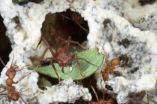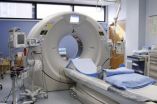(Press-News.org) HOUSTON -- (June 30, 2011) –The genome of the most common form of ovarian cancer is characterized by a few common gene mutations but also surprisingly frequent structural changes in the genome itself, said members of The Cancer Genome Atlas, including the Baylor College of Medicine Human Genome Sequencing Center, that sequenced and analyzed more than 300 such tumors. The study was the first to achieve an overview of this type of ovarian cancer.
"We found that ovarian cancer has a dramatic pattern of genomic disruption," said Dr. Richard Gibbs, director of the Baylor Human Genome Sequencing Center and an author of the report that appears in the current issue of the journal Nature. The BCM Center completed one-quarter of the sequencing.
Ovarian carcinoma (a form of cancer) is the fifth leading cause of cancer deaths among women in the United States. An estimated 21,880 cases and 13,850 deaths from the disease occurred in 2010. More than 70 percent of patients are not diagnosed until they have an advanced stage form of the disease, and the most common kind of ovarian cancer is serous ovarian adenocarcinoma– a high-grade form of which was sequenced by the researchers in this project. The National Cancer Institute and the National Human Genome Research Institute of the National Institutes of Health funded this project.
The researchers said in their report that the spectrum of gene mutations in the study "was surprisingly simple."
The study found that 96 percent of the tumors had mutated TP53 genes. When normal, this gene is a tumor suppressor. Its loss allows tumors to develop without check. Nine other mutated genes occur at much lower but statistically significant rates. Among these are NF1, BRCA1, BRCA2, RB1, and CDK12. BRCA1 and BRCA2 (known primarily as breast cancer genes) that were mutated in 30 percent of patients while the occurrence of the other mutations was much lower. Some BRCA1 and BRAC2 mutations were inherited while others occurred spontaneously in the breast tissue.
"A globally disrupted genome is the common theme in this cancer," said Gibbs. "Large-scale amplifications and deletions of chromosome segments make this cancer very complex."
"This landmark study is producing impressive insights into the biology of this type of cancer," said National Institutes of Health Director Dr. Francis Collins. "It will significantly empower the cancer research community to make additional discoveries that will help us treat women with this deadly disease. It also illustrates the power of what's to come from our investment in The Cancer Genome Atlas."
While the mutation pattern seemed simple, the researchers found that, this form of ovarian cancer "demonstrates a remarkable degree of genomic disarray."
In particular, the authors point to the frequency of somatic copy number variations, in which parts of the genome are duplicated or deleted in the tumors themselves. More than half of these tumors had defects in genes that play a role in the repair of defects that occur when cells divide and duplicate their DNA. The authors said that drugs called PARP inhibitors are already used in this diseases and this explains why they are sometimes successful in treating the disease.
"We also defined a set of genes that were associated with worse or better patient outcome," said Dr. Chad Creighton, assistant professor in the division of biostatistics in the NCI-designated Dan L. Duncan Cancer Center at BCM. He and others on the Genome Atlas team identified a transcriptional signature of 193 genes that predicts survival. (The transcriptional signature involves assessing gene activity by measuring the types and quantities of RNA [genetic material that forms a template from which parts of cell make protein] cells produce.) They correlated 108 genes with poor survival and 85 genes with good survival.
While high-grade serous ovarian adenocarcinoma is conventionally considered as one type of cancer having uniform features, "we could divide the tumors into four different groups based on gene expression patterns," said Creighton. "They look like four different cancers."
"We were able to define a set of genes that were associated with worse outcomes versus better outcomes in patients," he said. They applied this gene signature to other sets of data collected about ovarian cancer and found that the profile predicted worse or better outcome there as well.
"These data are all public," said Creighton. "They are meant for people to use to find specific genes for research. They could influence a lot of future studies."
The Cancer Genome Atlas project was created to provide this kind of information for a host of cancers – some of which have already been sequenced and others underway or in the planning stages.
"This allows us to better characterize the disease at a molecular level and catalogue the genetic abberations," said Creighton. "This is a much more comprehensive dataset than we have ever had before."
"The new knowledge of the genomic changes in ovarian cancer has revealed that the molecular catalysts of this disease are not limited to small changes affecting individual genes," said NCI Director Dr. Harold E. Varmus. "Also important are large structural changes that occur in these cancer genomes. Cancer researchers can use this comprehensive body of information to better understand the biology of ovarian cancer and improve the diagnosis and treatment of this dreaded disease."
###
Other Baylor researchers who took part in this work include Dr. David Wheeler, Kyle Chang, Huyen H Dinh, Jennifer A. Drummond, Dr. Gerald Fowler, Dr. Preethi Gunaratne, Alica C. Hawes, Christie L. Kovar, Lora R. Lewis, Margaret B. Morgan, Dr. Irene F. Newsham, Jireh Santibanez, Dr. Jeffrey G. Reid, Dr. Lisa R. Trevino, Dr. Yuan-Qing Wu, Dr. Min Wang and Donna M. Muzny.
For more information on basic science research at Baylor College of Medicine, please go to www.bcm.edu/fromthelab.
END
CLEVELAND – June 29, 2011 –Researchers at Case Western Reserve University School of Medicine have discovered a long-sought cellular factor that works to inhibit HIV infection of myeloid cells, a subset of white blood cells that display antigens and hence are important for the body's immune response against viruses and other pathogens.
The factor, a protein called SAMHD1, is part of the nucleic acid sensing machinery within the body's own immune system. It keeps cells from activating immune responses to the cells own nucleic acids, thus preventing certain forms of autoimmunity ...
"This quasar is a vital probe of the early Universe. It is a very rare object that will help us to understand how supermassive black holes grew a few hundred million years after the Big Bang," says Stephen Warren, the study's team leader.
Quasars are very bright, distant galaxies that are believed to be powered by supermassive black holes at their centres. Their brilliance makes them powerful beacons that may help to probe the era when the first stars and galaxies were forming. The newly discovered quasar is so far away that its light probes the last part of the reionisation ...
PROVIDENCE, R.I. [Brown University] — Research results from the National Lung Screening Trial, published online June 29 in the New England Journal of Medicine confirm that helical low-dose CT (LDCT) scans for lung cancer reduce deaths in heavy smokers by 20 percent compared to X-ray scans, but several other key findings from the data gathered in the study, including cost-effectiveness, will be released in the next six months, said a Brown University statistician who helped lead the massive government-funded study.
"The results of the study say that the time has come for ...
(Embargoed) CHAPEL HILL, N.C. – Using a combination of genetic engineering and laser technology, researchers at the University of North Carolina at Chapel Hill have manipulated brain wiring responsible for reward-seeking behaviors, such as drug addiction. The work, conducted in rodent models, is the first to directly demonstrate the role of these specific connections in controlling behavior.
The UNC study, published online on June 29, 2011, by the journal Nature, uses a cutting-edge technique called "optogenetics" to tweak the microcircuitry of the brain and then assess ...
A Princeton researcher and his international collaborators have used lasers to peek into the complex relationship between a single electron and its environment, a breakthrough that could aid the development of quantum computers.
The technique reveals how an isolated electron and its surroundings develop a relationship known as a Kondo state – a state of matter that is of great interest to physicists and engineers. The results not only yield insights into a long-standing quandary in theoretical physics, but also may help scientists understand how to store information at ...
www.At-HomeMedSpa.com has announced the addition of the La-Roche-Posay line, to their online store. La Roche-Posay is famous for using thermal spring water rich in selenium. La Roche-Posay is an internationally known line of skincare sold all over Europe, Asia, Latin America, and now it is available at At-HomeMedSpa in the United States! The unique thermal spring water comes from a small village in central France called La Roche-Posay, which is where the brand's name is derived from.
La Roche-Posay Thermal Spring Water is the result of rainwater flowing over vast expanses ...
June 30, 2011 – The development of agriculture was a significant event in human cultural evolution, but we are not the only organisms to have adopted an agricultural way of life. In a study published online today in Genome Research (www.genome.org), researchers have sequenced the genome of a fungus farming leaf-cutting ant, revealing new insights into the genetics and molecular biology behind this unusual lifestyle.
Found in Central and South America as well as the southern United States, leaf-cutting ants have evolved a symbiotic relationship with fungus. By breaking ...
Scientists have found a 20 percent reduction in deaths from lung cancer among current or former heavy smokers who were screened with low-dose helical computed tomography (CT) versus those screened by chest X-ray. The primary research results from the National Lung Screening Trial (NLST) were published online today in the New England Journal of Medicine.
This article provides a more extensive analysis of the data originally reported in November 2010 while providing additional data to the public and research community without barriers to access. Sponsored by the National ...
Joe Jedlowski is pleased to announce a significant donation made to the Alzheimer's Association. This donation will help in many aspects when it comes to research and treatment of this detrimental disease. Joe Jedlowski, who is a prominent executive throughout the senior living field, has firsthand knowledge of the effects that Alzheimers has on individuals and their families.
As Regional Vice President of Atria Senior Living Group, Joe was affiliated with many influential groups and organizations within the New Jersey community. In addition to monetary donations, he ...
An analysis of genomic changes in ovarian cancer has provided the most comprehensive and integrated view of cancer genes for any cancer type to date. Ovarian serous adenocarcinoma tumors from 500 patients were examined by The Cancer Genome Atlas (TCGA) Research Network and analyses are reported in the June 30, 2011, issue of Nature.
Serous adenocarcinoma is the most prevalent form of ovarian cancer, accounting for about 85 percent of all ovarian cancer deaths. TCGA researchers completed whole-exome sequencing, which examines the protein-coding regions of the genome, ...





